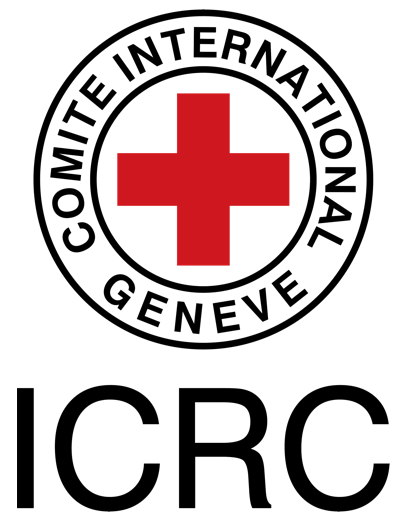Patient Health Questionnaire
Original Editor - User Name
Top Contributors - Manisha Shrestha and Cindy John-Chu
Introduction[edit | edit source]
Patient Health Questionnaire (PHQ)
- is a self-administered version of the PRIME-MD (Primary Care Evaluation of Mental Disorders) diagnostic instrument for common mental disorders.
- was developed by Drs. Robert L. Spitzer, Janet B.W. Williams, Kurt Kroenke, and colleagues.
- incorporate DSM-IV depression criteria with other leading major depressive symptoms into a brief self-report instruments that are commonly used for screening and diagnosis, as well as selecting and monitoring treatment.[1]
- has two versions PHQ-9 and PHQ-2.
PHQ-9
- This depression module consists of 9 questions related to DSM-IV criteria.
- These questions are asked based on the past 2 weeks.
- It is a likert scale in which “0” (not at all) to “3” (nearly every day) so the maximum total score is 27 and minimum score is 0.
- with increase score signifies increase in severity.
- An item was also added to the end of the diagnostic portion of the PHQ-9 asking patients who checked off any problems on the questionnaire: “How difficult have these problems made it for you to do your work, take care of things at home, or get along with other people?”
- It can be assessed here.
PHQ- 2
- It came into the picture as even briefer outcome measures is desirable for use in busy clinical settings or as part of comprehensive health questionnaires.
- The purpose of the PHQ-2 is to screen for depression in a “first-step” approach.
- Patients who screen positive should be further evaluated with the PHQ-9 to determine whether they meet criteria for a depressive disorder. [2]
- It inquires about the frequency of depressed mood and anhedonia over the past 2 weeks, scoring each as 0 ("not at all") to 3 ("nearly every day").
- It can be assessed here.
Objective[edit | edit source]
The patient health questionnaire (PHQ) is a multipurpose instrument for screening, diagnosing, monitoring and measuring the severity of depression.[2]
Intended Population[edit | edit source]
- General population with 15 years or older.[3]
Method of Use[edit | edit source]
It is a self-report outcome measure.
Interpretation[edit | edit source]
The scores range from 0-27 where increase in the score denotes increase in the severity.
Total scores of 5, 10, 15, and 20 represent cut -points for mild, moderate, moderately severe and severe depression, respectively.
Note: Question 9 is a single screening question on suicide risk. A patient who answers yes to question 9 needs further assessment for suicide risk by an individual who is competent to assess this risk.
Provisional Diagnosis and Proposed Treatment Actions[2]
| PHQ-9 Score | Depression Severity | Proposed Treatment Actions |
|---|---|---|
| 0 – 4 | None-minimal | None |
| 5 – 9 | Mild | Watchful waiting; repeat PHQ-9 at follow-up |
| 10 – 14 | Moderate | Treatment plan, considering counseling, follow-up and/or pharmacotherapy |
| 15 – 19 | Moderately Severe | Active treatment with pharmacotherapy and/or psychotherapy |
| 20 – 27 | Severe | Immediate initiation of pharmacotherapy and, if severe impairment or poor response to therapy, expedited referral to a mental health specialist for psychotherapy and/or collaborative management |
Psychometric Properties[edit | edit source]
- When mental health professional (MHP) interview was used as the criterion standard, a PHQ-9 score ≥10 had a sensitivity of 88% and a specificity of 88% for major depression. On the other hand, individuals scoring low (≤ 4) on the PHQ-9 had a less than a 1 in 25 chance of having depression.
- Construct validity of the PHQ-9 as a depression severity measure in relation to functional status, disability days, and health care utilization. 20-item Short-Form General Health Survey is used for functional status, self-reported sick days as disability days and clinic visits for health care utilization. As PHQ-9 depression severity increased, there was a substantial decrease in functional status on all 6 SF-20 subscales whereas symptom-related difficulty, sick days, and health care utilization increased.[4]
- Using the MHP re-interview as the criterion standard, a PHQ-2 score > or =3 had a sensitivity of 83% and a specificity of 92% for major depression. As PHQ-2 depression severity increased from 0 to 6, there was a substantial decrease in functional status on all 6 SF-20 subscales. Also, symptom-related difficulty, sick days, and healthcare utilization increased.[5]
- A study done in 2017 to assess co-relation of PHQ-2 with PHQ-9 in patients with mild to severe traumatic brain injury within 1 year of injury showed PHQ-2 scores ≥2 had a sensitivity of 0.90 in predicting PHQ-9 scores ≥10, and a sensitivity of 0.95 in predicting endorsement of any passive or active suicidal thoughts on the PHQ-9. [6]
References[edit | edit source]
- ↑ American Psychological Association. Patient Health Questionnaire (PHQ-9 & PHQ-2) construct: depressive symptoms. Washington: APA. 2015.
- ↑ 2.0 2.1 2.2 Patient Health Questionnaire-9. Available from: https://www.hiv.uw.edu/page/mental-health-screening/phq-9
- ↑ Anand P, Bhurji N, Williams N, Desai N. Comparison of PHQ-9 and PHQ-2 as Screening Tools for Depression and School Related Stress in Inner City Adolescents. Journal of Primary Care & Community Health. 2021 Oct;12:21501327211053750.
- ↑ Kroenke K, Spitzer RL, Williams JB. The PHQ‐9: validity of a brief depression severity measure. Journal of general internal medicine. 2001 Sep;16(9):606-13.
- ↑ Kroenke K, Spitzer RL, Williams JB. The Patient Health Questionnaire-2: validity of a two-item depression screener. Medical care. 2003 Nov 1:1284-92.
- ↑ Donders J, Darland K. Psychometric properties and correlates of the PHQ-2 and PHQ-9 after traumatic brain injury. Brain injury. 2017 Dec 6;31(13-14):1871-5.






